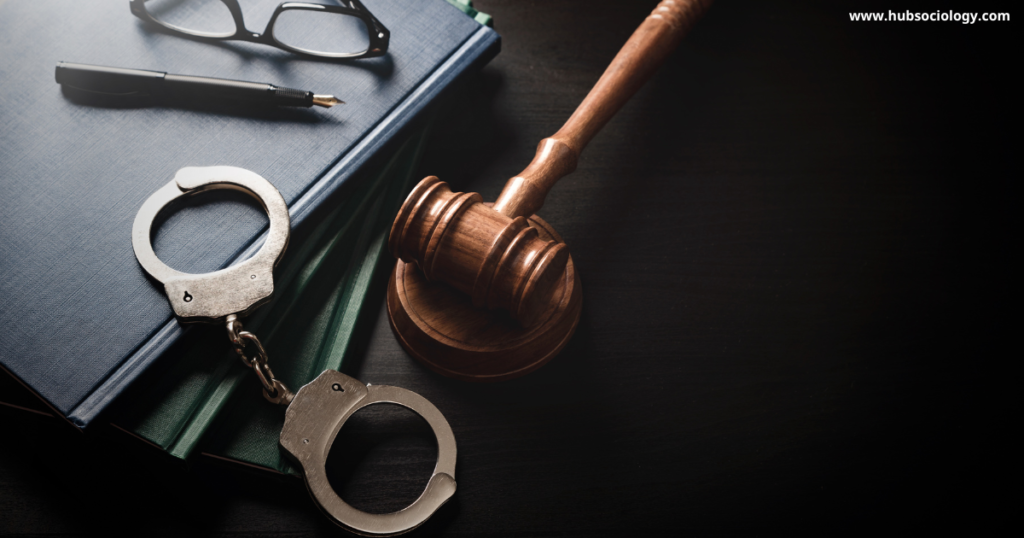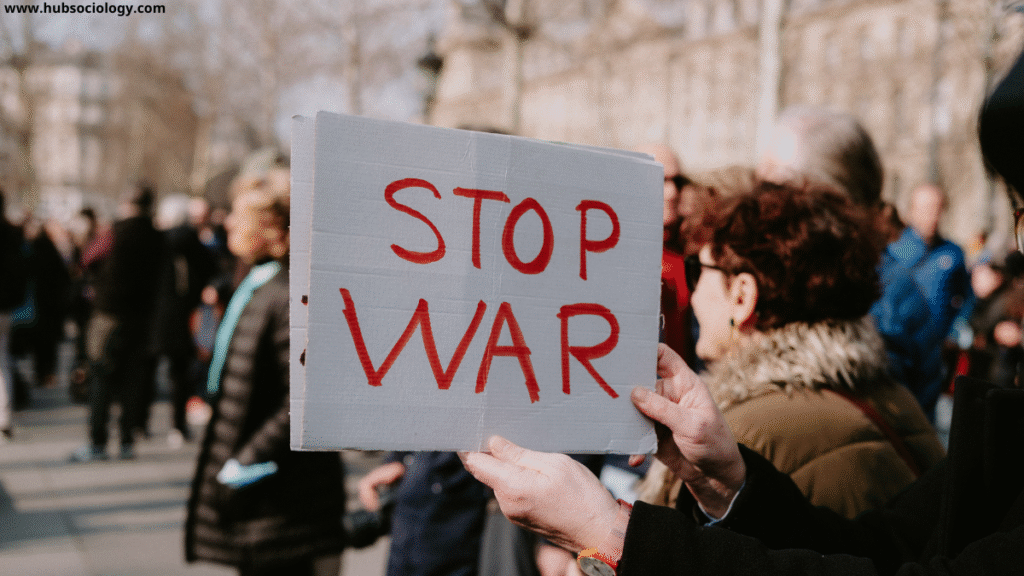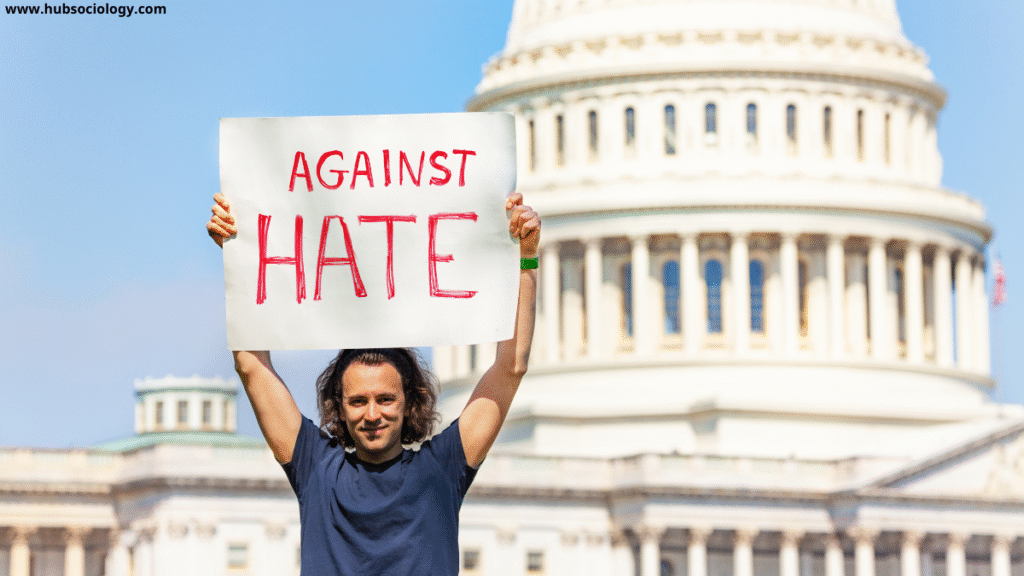Introduction
Crime has long been one of the most persistent challenges in human societies. While individual psychology and moral decay are often cited as causes of criminal behavior, sociology provides a broader and more structural explanation. The sociology of crime investigates the ways in which social conditions—such as poverty, class divisions, racial inequality, and institutional discrimination—create environments conducive to crime and violence. Central to this perspective is the idea that inequality breeds violence, not merely as an individual choice but as a collective outcome of social injustices and systemic deprivation.
In modern societies, crime is not just a matter of law enforcement but a mirror reflecting deeper social disorders. This article explores the sociology of crime, emphasizing how inequality—economic, political, and social—acts as a breeding ground for criminal behavior. It also examines major sociological theories, empirical evidence, and contemporary realities that demonstrate how violence emerges from unequal social structures.

Understanding the Sociology of Crime
The sociology of crime is a subfield of sociology that studies the social origins, patterns, and consequences of criminal behavior. It does not view crime as an isolated act of deviance but as a social phenomenon linked to the structure and functioning of society. This approach questions:
- Why do some groups experience higher crime rates than others?
- How do social institutions—family, education, economy, and law—shape criminal behavior?
- How does inequality affect opportunities, motivations, and moral boundaries?
Sociologists such as Émile Durkheim, Robert K. Merton, Karl Marx, and Michel Foucault have contributed significantly to understanding how society produces and defines crime. Durkheim saw crime as a “normal” part of social life—a reflection of the collective conscience’s boundaries—while Marx emphasized that crime is often a reaction to economic inequality and class exploitation. Thus, to understand crime, one must analyze the social system that produces the conditions of inequality.
The Roots of Crime in Inequality
Inequality manifests in various forms—economic disparity, educational deprivation, unemployment, social exclusion, and cultural marginalization. These inequalities generate frustration, alienation, and resentment, particularly among marginalized groups. The following dimensions illustrate how inequality breeds violence and crime.
1. Economic Inequality and Structural Violence
Economic inequality is one of the strongest predictors of violent crime. Societies with extreme income disparities tend to experience higher rates of homicide, theft, and organized crime. When a small elite controls wealth and resources, large segments of the population are left struggling for survival. This economic strain often leads individuals to illegitimate means of achieving socially approved goals, a concept elaborated by Robert Merton’s Strain Theory.
Merton argued that in capitalist societies, success is measured by material achievement, but access to legitimate means (education, employment, credit) is unevenly distributed. This structural inequality leads to “anomie”, a state of normlessness where individuals resort to deviance—such as theft, drug trafficking, or corruption—to achieve success. Thus, economic inequality directly produces crime by creating frustration and limiting legitimate opportunities.
2. Class Conflict and the Marxist View of Crime
From a Marxist perspective, crime is deeply embedded in the capitalist mode of production. According to Karl Marx and later theorists like Richard Quinney and Willem Bonger, the capitalist system inherently produces inequality, exploitation, and alienation. The ruling class (bourgeoisie) controls not only the means of production but also the legal and ideological systems that define what constitutes “crime.”

Marxist criminology argues that:
- The poor are criminalized for acts of survival (petty theft, informal labor), while
- The rich commit “crimes of the powerful” (corporate fraud, political corruption) that often go unpunished.
This double standard reveals that crime is not just a moral issue but a political one—rooted in unequal power relations. Violence, therefore, becomes a response to oppression and exclusion. As Bonger stated, capitalism fosters an environment where selfishness and competition override social solidarity, leading to moral decay and deviant acts.
3. Relative Deprivation and Frustration
Even in societies where absolute poverty decreases, relative deprivation—the perception of being unfairly disadvantaged compared to others—can trigger anger and aggression. Ted Robert Gurr’s theory of relative deprivation explains that when individuals or groups feel deprived of opportunities and respect relative to others, they may resort to crime or collective violence to restore perceived justice.
Urban environments often exemplify this: the coexistence of luxury and destitution within the same city creates a constant reminder of inequality. Youths in impoverished neighborhoods, exposed to consumerist ideals through media but denied access to education or jobs, may turn to gang activities, robbery, or drug trade as alternative means of achieving status and recognition.
4. Urbanization, Marginality, and the “Culture of Violence”
Urban sociology highlights how cities—especially in developing nations—serve as hotspots of crime due to overpopulation, unemployment, slum growth, and weak community bonds. The Chicago School of Sociology, led by Shaw and McKay, developed the Social Disorganization Theory, which links high crime rates to deteriorating neighborhoods with poverty, ethnic diversity, and residential mobility.
In such communities, traditional norms weaken, and informal social control declines. Young people growing up in marginalized environments often internalize a subculture of violence, where aggression becomes a tool for survival and respect. Gang culture, for instance, provides identity and protection in the absence of stable family and economic structures.
5. Inequality in Education and Employment
Educational and occupational inequalities further perpetuate crime by limiting social mobility. Functionalist sociologists argue that education is supposed to integrate individuals into society by rewarding merit, but conflict theorists reveal how it reproduces class and caste hierarchies. When marginalized groups realize that education does not guarantee employment or social respect, disillusionment sets in.
Unemployment, especially among youth, is a key factor in the rise of violence. Idle young men in urban slums or rural depressed areas are more prone to engage in theft, drug trafficking, and violent protests. The frustration-aggression hypothesis explains that blocked aspirations due to systemic inequality convert frustration into aggression, often expressed through criminal acts.
6. Gender and Inequality: Crime as Patriarchal Power
Inequality is not only economic but also gendered. Feminist criminology examines how patriarchal systems produce both gender-based violence and discriminatory treatment of women in law enforcement and justice systems. Women often become victims of violence (domestic abuse, sexual harassment, trafficking) due to their subordinate status. At the same time, women who commit crimes are stigmatized more harshly.
The intersection of gender and class inequality explains why many women engage in survival crimes—such as theft, prostitution, or smuggling—under economic compulsion. Thus, inequality is not merely a background condition but an active force shaping the gendered nature of violence.
7. Ethnic and Racial Inequality
Ethnic minorities, migrants, and marginalized castes often experience institutional discrimination that limits access to justice and economic opportunities. In plural societies, inequality among groups breeds resentment and inter-group violence. Sociologists studying postcolonial and multicultural societies argue that ethnic violence and hate crimes are outcomes of unequal resource distribution and political exclusion.

In the Indian context, caste discrimination, communal riots, and mob lynching reveal how structural inequalities perpetuate cycles of violence. Crime, in these cases, becomes both a tool of domination and resistance.
Sociological Theories Linking Inequality and Crime
Sociology offers several frameworks to understand the relationship between inequality and crime:
| Theory | Key Thinker(s) | Core Idea |
|---|---|---|
| Strain Theory | Robert K. Merton | Inequality blocks legitimate means of achieving goals, leading to deviance. |
| Social Disorganization Theory | Shaw & McKay | Poverty and weak community institutions increase crime rates. |
| Marxist/Conflict Theory | Karl Marx, Richard Quinney | Crime arises from class exploitation; laws favor the powerful. |
| Labeling Theory | Howard Becker | Inequality in labeling creates “criminal” identities for the marginalized. |
| Feminist Theory | Carol Smart, Meda Chesney-Lind | Gender inequality structures both crime and its punishment. |
| Routine Activity Theory | Cohen & Felson | Inequality increases motivated offenders and reduces guardianship. |
These theories collectively demonstrate that crime cannot be divorced from the structural realities of inequality.
Empirical Evidence: The Inequality-Crime Nexus
Numerous studies confirm the correlation between inequality and violence:
- Wilkinson and Pickett (2009) in The Spirit Level showed that countries with higher income inequality experience higher homicide and imprisonment rates.
- UNODC (2023) reports that Latin American countries—among the most unequal—also have the highest homicide rates globally.
- In India, NCRB data consistently show that states with higher unemployment and caste-based disparities witness more violent crimes and mob violence.
- World Bank research indicates that youth unemployment, particularly in urban slums, is a key driver of violent crime in developing nations.
Such data reveal that inequality is not a mere background factor but a systemic determinant of social disorder.
Crime as a Form of Social Protest
From a sociological perspective, crime sometimes represents a distorted form of protest against systemic injustice. The French sociologist Durkheim suggested that deviance can be functional—it signals that society’s moral boundaries are being tested. Similarly, Ralf Dahrendorf viewed crime as an expression of conflict between those who hold authority and those who are subordinated.
Riots, looting, and vandalism, for instance, often erupt not from moral decay but from accumulated frustrations due to unemployment, police brutality, or discrimination. Such violence exposes the moral contradictions of societies that promise equality but deliver exclusion.
The Role of the State and Criminal Justice
Inequality is reinforced not only by markets but also by state institutions. The criminal justice system, instead of being a neutral arbitrator, often reflects class and caste biases. Poor and marginalized offenders face harsher punishment, while the powerful evade accountability. This phenomenon, termed “institutionalized inequality”, undermines trust in justice and perpetuates cycles of violence.
Moreover, the militarization of policing and the criminalization of poverty (e.g., vagrancy laws, slum demolitions) turn structural problems into law-and-order issues, deepening alienation. Sociologists argue that instead of punitive approaches, addressing the root causes—inequality, unemployment, and exclusion—is essential for lasting peace.
Contemporary Relevance: Inequality and Digital Violence
In the digital era, inequality manifests online as well. Cybercrime, online hate speech, and digital harassment often mirror offline power dynamics. The digital divide excludes marginalized groups from information access, while others exploit digital anonymity to perpetuate violence. The internet has become both a new battleground of inequality and a tool for organized crime and radicalization.
Toward a Sociological Solution
Understanding that inequality breeds violence implies that the solution to crime is not merely more policing but more equality. Sociological approaches advocate for:
- Economic justice – equitable distribution of resources and employment opportunities.
- Educational reform – inclusive and skill-oriented education to reduce deprivation.
- Community development – strengthening local institutions and youth programs.
- Restorative justice – focusing on rehabilitation rather than punishment.
- Gender and caste equity – dismantling systemic hierarchies that marginalize groups.
When social structures promote dignity, participation, and fairness, crime naturally declines.
Conclusion
Crime and violence do not arise in a vacuum—they are products of inequality embedded in social, economic, and political systems. From slum thefts to corporate fraud, from gendered violence to ethnic riots, each form of crime reflects the deeper fault lines of injustice. The sociology of crime thus reveals that addressing inequality is not only a moral duty but a practical necessity for building peaceful societies.
As long as wealth, power, and respect remain unequally distributed, violence will continue to be both an act of desperation and a cry for justice. To prevent crime, societies must look beyond punishment and towards social transformation—creating systems that nurture equality, opportunity, and human dignity for all.
Do you like this this Article ? You Can follow as on :-
Facebook – https://www.facebook.com/hubsociology
Whatsapp Channel – https://whatsapp.com/channel/0029Vb6D8vGKWEKpJpu5QP0O
Gmail – hubsociology@gmail.com
10 FAQs on Sociology of Crime
1. What is the Sociology of Crime?
The Sociology of Crime is the study of how social structures, cultural norms, and inequalities influence criminal behavior. It examines crime as a social phenomenon rather than just an individual act of deviance.
2. Why is the Sociology of Crime important?
The Sociology of Crime helps us understand the root social causes of criminal behavior—such as poverty, inequality, and marginalization—enabling the development of effective prevention and rehabilitation policies.
3. How does inequality influence the Sociology of Crime?
In the Sociology of Crime, inequality is seen as a major driver of violence and deviance. Economic disparity, social exclusion, and discrimination often push marginalized groups toward criminal activities.
4. What are the major theories in the Sociology of Crime?
The main theories in the Sociology of Crime include Strain Theory (Merton), Conflict Theory (Marx), Social Disorganization Theory (Shaw & McKay), Labeling Theory (Becker), and Feminist Criminology. Each highlights different social causes of crime.
5. How does the Sociology of Crime differ from Criminology?
While criminology focuses on the legal and psychological aspects of crime, the Sociology of Crime emphasizes the social, economic, and cultural factors that shape criminal behavior and define what society considers “criminal.”
6. What role does poverty play in the Sociology of Crime?
In the Sociology of Crime, poverty is a key factor linked to high crime rates. Economic deprivation limits opportunities and leads individuals to engage in deviance as a means of survival or protest.
7. How does the Sociology of Crime explain gender-based violence?
The Sociology of Crime explains gender-based violence as a product of patriarchal power structures and social inequalities that normalize male dominance and female subordination.
8. What is the relationship between education and the Sociology of Crime?
The Sociology of Crime highlights that unequal access to education can perpetuate social exclusion and increase crime. Education provides social mobility; its absence often fosters frustration and deviant behavior.
9. How do social institutions influence the Sociology of Crime?
In the Sociology of Crime, institutions like family, education, and law are seen as social controls. When they fail to integrate individuals effectively, the likelihood of deviance and criminality increases.
10. How can the Sociology of Crime help in crime prevention?
The Sociology of Crime offers strategies for crime prevention by addressing social inequalities, improving community bonds, promoting inclusive education, and ensuring fair access to justice and resources.
